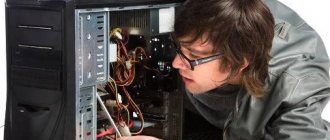Every day, passenger transportation of people is carried out in the direction specified by the route map by bus drivers. This can be intracity public transport, intercity and international, as well as a specialized route. The movement of the bus must be carried out in strict compliance by the driver not only with traffic rules. A bus driver has, by virtue of his profession, a number of other rights and responsibilities.
When and by whom was the document approved?
The collection of instructions for drivers carrying out passenger road transport is enshrined in an Order issued by the Ministry of Transport on January 1, 1986.
The document includes the following subsections:
- general duties that apply to drivers involved in the transport of people;
- duties of the driver performed before the flight and while the vehicle is moving;
- requirements when operating flights in difficult conditions;
- requirements when working in the evening and at night with insufficient natural light;
- features that must be taken into account when working in the spring-summer period;
- features of drivers’ work in the autumn-winter period;
- rules for evacuating people in the event of an emergency;
- responsibilities of the driver when transporting children on the bus;
- responsibilities arising when transporting people and requirements for the vehicle;
- conditions for safe passage when moving vehicles with passengers, the duration of which is more than 1 work shift;
- rules for providing first aid to victims of an accident and other emergency situations.
.
Required knowledge
The job description of a driver of freight, passenger, passenger and other types of transport requires the driver to have the following knowledge:
- structure and principle of operation of the vehicle;
- Traffic Laws;
- maintenance features;
- signs of malfunctions and ways to eliminate them;
- rules for the use of batteries and tires to ensure their long-term safety;
- rules for providing emergency medical care to passengers;
- features and procedure in case of an accident;
- laws relating to the performance of official duties and labor protection.
What the driver should know
The driver of any bus transporting people must know:
- Traffic Laws. Tests for knowledge of traffic rules are periodically carried out;
In addition, when transferring from one vehicle to another, the driver must undergo retraining taking into account not only technical knowledge, but also traffic rules.
- operating rules of the bus on which he works;
- rules for the use of means of warning passengers during regular flights;
- safety precautions when moving and stopping a vehicle, as well as fire safety rules;
- methods for identifying and eliminating malfunctions of vehicles that are the driver’s workplace;
- the procedure for calling emergency assistance if it is impossible to fix the malfunction yourself;
- methods of communication with personnel servicing the transportation of passengers. Fast communication may be required if it is necessary to change the route, in the event of an emergency, and so on. A cell phone or walkie-talkie can be used for communication;
- route, stopping places for boarding (disembarking) passengers, dangerous areas along the bus route, detour routes in case of repair work on the road, as well as the location of medical institutions, gas stations and stations for monitoring the technical condition of the bus along the route;
- rules for transporting people on a bus, as well as rules for transporting baggage and hand luggage, developed and approved by the Ministry of Transport of the Russian Federation;
- rules on tariffs and collection of fares on regular routes;
- features of driving in winter or during bad weather;
- procedure for action in the event of a possible terrorist attack or discovery of abandoned objects inside the bus;
- the work and rest schedule that the driver must observe during long trips;
- the procedure for undergoing a pre-trip medical examination;
- a list of documents that must be carried when making a flight and presented to traffic police officers for verification;
- regulations in force in the transport company and personal job description.
The fine for illegally transporting passengers is shown in the article: illegally transporting passengers. Read about concluding a contract for chartering a bus for transporting children here.
The legislative framework
Activities for the transportation of people by ground transport are regulated by Federal Law No. 220 “On the organization of regular transportation of passengers and luggage by road transport and urban ground electric transport in the Russian Federation.” It was adopted relatively recently, in July 2015, and introduced a number of changes to the existing framework regulating this area.
The federal act defines the basic concepts in the field of passenger transportation, regulates the organization of transportation on interregional and municipal routes, establishes requirements for transport infrastructure facilities and establishes control over the correct implementation of transportation.
This document is the main special legal act in the field of transporting people by bus. On its basis, a number of decrees were issued by the subjects of the country, regulating the activities of local carriers and including some features related to the region of transport operation. In addition, based on labor and special legislation, each municipality should adopt a job description for bus drivers, establishing the rights, duties and responsibilities of local workers.
Responsibilities of a bus driver when transporting people
The responsibilities of a driver transporting people by bus are:
- the need to undergo certain procedures before performing a flight, which include: checking the technical condition of the vehicle. The following are subject to inspection: the internal and external condition of the bus, which must be clean, the presence of fuel in the tank, the compliance of tires with weather conditions, the presence of rear-view mirrors, the serviceability of all devices affecting traffic safety, the correct operation of emergency exits, ventilation and heating systems interior, availability of tools, fire extinguishers, first aid kit;
- passing medical control before departure on a flight. A medical professional is obliged to examine the driver for general health, if necessary, measure body temperature, check blood pressure, and if there is suspicion, take a test for alcohol or drugs;
- obtaining documents: registration certificate, waybill, compulsory motor liability insurance policy, route map or contract for customized transportation, list of passengers (for customized transportation).
- strict adherence to the route specified in the documents and instructions from the dispatch service;
- inform the mechanic responsible for releasing vehicles onto the line about all identified deficiencies or malfunctions of the bus;
At the enterprise
If people working at an enterprise are transported and their own vehicle is used for this, the bus driver is obliged to:
- Before the trip, inspect the vehicle and make sure it is in good condition;
- undergo a medical examination;
- obtain from the dispatcher (responsible employee) documents for transportation indicating the route, approximate time of departure and arrival (waybill);
- deliver people. This requires strict adherence to traffic rules, speed limits, and safety rules;
- hand over the waybill to the dispatcher and indicate parameters such as mileage traveled during transportation, the amount of gasoline remaining, and so on.
School transport
When transporting children by school buses, the driver must:
- check the technical condition of the bus before each transportation;
- undergo medical control before transportation;
- pick up (drop off) children only in completely safe places;
- do not carry out transportation with the windshield wipers not working in the dark or in bad weather;
- do not overload the bus. The maximum number of small passengers must correspond to the number of seats;
- do not allow windows in the cabin to be opened, as an open window may cause harm to the child’s health;
- do not transport children without elders who are accompanying and responsible for the safety of children while driving;
- do not exceed the speed of movement. The maximum speed for a school bus is 40 km/h.
Shuttle bus
Shuttle buses must move strictly along the specified route, observing all stops indicated in the documentation.
The driver of the shuttle bus is obliged to:
- check the serviceability of the bus before departure;
- undergo a medical examination before being released onto the line;
- obtain documents and, in the absence of a conductor, tickets for passengers;
- strictly follow the indicated route;
- inform passengers about their arrival at the stop;
- stop only in specially equipped places;
- limit the capacity of the bus at your discretion;
- do not start moving from a stop with the doors open;
- sell tickets exclusively at stops;
- follow all traffic rules.
Specifics of drawing up a job description
The legislation does not stipulate the criteria that a job description must meet. However, there are certain business standards that are taken into account when creating it. Thus, the structure of the document includes the following sections:
- A common part.
- Job functions.
- Measures of possible liability.
- Specialist rights.
Some employers, especially from large companies, add to the basic sections:
- Working conditions.
- Industry safety requirements.
- Parameters of job connections.
- Criteria for assessing the quality of work performed.
The point of including additional parts is to formalize labor procedures, which is especially important in situations with numerous employees working in different areas.
General provisions
This introductory section describes general operating parameters. This includes:
- procedure for replacing an employee;
- the procedure for his hiring and dismissal;
- to whom he directly reports at work;
- the skills, experience and education expected of him.
The qualifications listed here must enable you to effectively perform the functions outlined in the following section.
Attention! Professional requirements for bus drivers are regulated by Order of the Ministry of Transport No. 287 dated September 28, 2017. The procedure for their hiring and further vocational training is regulated by Order No. 59 of March 11, 2016.
Functions
This part of the instructions is responsible for a detailed listing of job responsibilities. This includes both the main responsibilities of the driver - transportation, operation of the vehicle - and secondary ones, depending on the specifics of a particular employer. Separately mentioned are the functions of compliance with labor protection, technical and fire safety standards.
Attention! The details of the section depend on the employer. In some cases, he describes in detail the work process, from checking the bus to the procedure for handing over a shift. This level of detail is especially common in municipal transport enterprises.
Responsibility
This section includes several paragraphs that describe violations and penalties. The description is given in a general format, since the specifics are defined in the relevant sections of legislation and internal corporate rules.
Rights
The list of rights should not repeat the one given in Art. 21 TK. This list supplements them by specifying additional employee capabilities. The specific content of the section depends on the employer’s personnel policy, the employee’s place in the hierarchy and other points.
Working conditions
This section applies if the employing company wants to describe the characteristics of the employee’s activities. Therefore, this includes additional benefits or requirements for labor processes. So, here you can add a non-standard work schedule, requirements for medical examinations, or compensation for communication and transportation expenses.
The bus driver is not only responsible for transporting people, but also ensures their safety during the trip. This places serious demands on the quality of his job description. Therefore, it is compiled with the help of a lawyer, a personnel officer, and the head of the traffic department. Only after taking into account their comments, the instructions are submitted for signature to the head of the company. The employee himself signs it during employment, demonstrating agreement with its provisions. Signatures of other employees with whom the document was agreed may also be required in accordance with the rules of the applicable document flow.
What rights does he have?
Bus drivers, in addition to their duties, have the following rights:
- receive food out of turn at the car depot canteen or at final and intermediate stations;
- deviate from the existing traffic schedule for a city route by no more than 5 minutes, on suburban routes by 7 minutes, when carrying out intercity transportation by 10 minutes, when operating on international routes by no more (less) than 30 minutes;
- independently control the availability of tickets for passengers and collect fines in the absence of travel documents;
- on routes passing outside the city, disembark (pick up) passengers outside designated areas. At the same time, traffic rules in the stopping and parking area must be strictly observed;
- monitor the behavior of passengers during transportation and, if necessary, take measures to resolve the situation;
- demand from the management of the transport company in which the driver works to comply with work and rest schedules when working with passengers.
General provisions
1.1. The bus driver is classified as a worker and is directly subordinate to him.
1.2. The position of bus driver is accepted for a person who has a secondary general education, the right to drive a category vehicle and at least years of driving experience.
1.3. The bus driver is appointed to the position and dismissed by order.
1.4. The bus driver must know:
— design and rules of technical operation of the bus, technical characteristics of the bus, consumption rates of fuel and lubricants, spare parts, operating principles of the main units and systems of the bus, methods for identifying and eliminating malfunctions;
- Traffic Laws;
— route diagram, features and dangerous sections of the route;
— the procedure for calling technical assistance, submitting an application for repairs and registering the return of the bus to the fleet due to technical failures;
— procedure for working with a microphone, list of mandatory announcements;
— current forms of payment for travel in public ground urban passenger transport;
— methods of communication with operational personnel of the traffic service and park employees;
— the procedure for issuing waybills, ticket and accounting documents;
— features of bus operation in autumn-winter conditions;
— a memo for the driver of a vehicle on the prevention of terrorist acts on rolling stock;
— the influence of weather conditions on the safety of driving a vehicle;
— ways to prevent road accidents;
— timing of the next maintenance and technical inspection;
— basics of labor legislation;
— internal labor regulations;
— rules and regulations of labor protection, safety and fire protection;
— rules for using personal protective equipment;
— techniques for providing first aid in case of accidents.
Responsibility for violation of official duties
The driver is solely responsible for:
- for non-compliance with traffic rules;
- for failure to comply with the rules provided for by regulations, including responsibility for compliance with the rules for the carriage of passengers;
- for the safety of passengers along the route;
- for the safety of the vehicle entrusted to the management;
- when performing regular transportation for the safety of proceeds from ticket sales in the absence of a conductor;
- for excessive consumption of fuel through one’s own fault, that is, in a situation where it is impossible to prove the validity of excessive consumption of gasoline;
- for unauthorized use of the bus for other purposes. For example, for personal purposes.
Liability is established within the framework of Russian legislation.
The driver of a bus transporting people must know not only how to drive a vehicle, but also how to behave in a given situation, as well as how to provide first aid to injured passengers.
To achieve this, drivers undergo constant internships and retraining. The driver is responsible to passengers for the safety of transportation and to the owner of the bus for the safety of his property.
Rules for transporting children on a motorcycle can be found in the article: transporting children on a motorcycle. For information on intercity passenger transportation, see the page.
Sample work order for the transportation of passengers.
Responsibility
The bus driver is responsible for:
4.1. For non-fulfillment or improper fulfillment of the duties provided for in these instructions - within the limits determined by the labor legislation of the Russian Federation.
4.2. For offenses committed in the course of carrying out their activities - within the limits determined by the current administrative, criminal and civil legislation of the Russian Federation.
4.3. For causing material damage to the employer - within the limits determined by the current labor and civil legislation of the Russian Federation.




